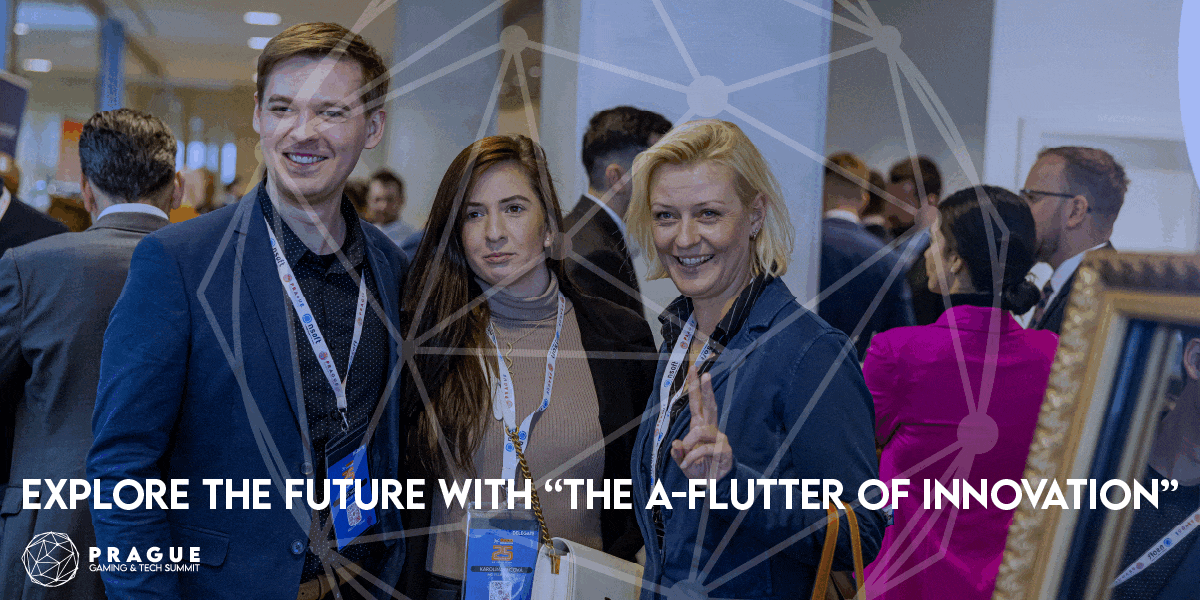Fintech
Revolutionizing Play and Pay: Fintech Leader Ibanera Redefines Financial Dynamics for the Gaming Sector

Ibanera, an online fintech institution, announces an exciting array of gaming-focused financial services- a fully optimised suite of applications designed to align with the evolving financial paradigms within the global gaming industry.
In the realm of electronic gaming, where a staggering $400 billion was amassed in 2023, poised for sustained growth, a transformative shift in revenue generation is underway. The prosperity of contemporary games is intricately linked to in-app purchases, compelling game developers and publishers to explore innovative economic models. This exploration extends into the realm of tokenized digital assets within games, tradable assets stemming from in-app transactions, and unprecedented opportunities for professional gamers to prosper through a sophisticated play-to-earn framework
Ibanera’s strategic initiative materializes through a portfolio of services, notably featuring the introduction of PORTL, a solution meticulously designed for buying and selling digital assets. Moreover, Ibanera extends white-label solutions to gaming entities, facilitating the seamless integration of embedded payment tools for web3 game developers. The compatibility with blockchain and provision of multi-currency accounts underscore Ibanera’s unwavering commitment to delivering a suite of services that transcend conventional financial norms.
This venture represents a substantial investment for Ibanera, propelled by the strategic vision of CEO Michael Carbonara. In his statement, Carbonara remarked, “We are addressing the pressing need for heightened functionality within gaming companies. The pace of evolution in the gaming industry has surpassed the capacities of traditional banking institutions.”
The company’s foray into gaming-focused financial services signifies a significant milestone at the intersection of fintech and gaming, positioning the institution as a vanguard in an industry undergoing unprecedented transformation. The suite of applications not only addresses current demands but also strategically anticipates and caters to the future financial intricacies that will define the gaming experience.
Fintech
Fintech Pulse: Your Daily Industry Brief – April 25, 2025 | Nubank, Fiserv, LendMN, Clara, Alternative Payments

Welcome to today’s Fintech Pulse, your op-ed–style deep dive into the developments reshaping financial technology. In this edition, we examine five pivotal stories—from strategic regulatory wins and M&A moves to capital infusions empowering underserved markets. Our analysis delivers not just the facts, but the insights driving tomorrow’s fintech landscape.
1. Nubank Secures Mexican Banking License
News Summary
Brazil’s digital banking powerhouse Nubank has cleared a major regulatory hurdle in Mexico, obtaining initial approval from the National Banking and Securities Commission to transition from a payments-focused issuer to a full-service bank. This milestone permits Nubank to broaden its product suite—adding salary deposits, expanded savings offerings, and potentially consumer loans—currently restricted under its existing license. With over 10 million customers in Mexico, the move cements Nubank’s regional footprint.
Source: Reuters
Analysis & Commentary
Nubank’s license approval represents a calculated shift from neo-banking into universal banking, mirroring strategies by other challengers seeking diversified revenue streams. By evolving into a full bank, Nubank can integrate deposit-taking operations with cross-sell opportunities for credit, insurance, and investment products. This vertical integration not only boosts customer lifetime value but also insulates against margin compression in transactional services.
Industry watchers should note that Nubank’s success could spur incumbents to accelerate digital transformation, potentially igniting a wave of partnerships or counter-moves across Latin America’s top banking markets.
2. Fiserv to Acquire Money Money in Brazil
News Summary
U.S. payments stalwart Fiserv has inked a definitive agreement to acquire Brazilian fintech Money Money Serviços Financeiros, aiming to enhance its suite of merchant services for Latin America’s SMB segment. Pending approval by Brazilian regulators, the deal is slated to close in Q2 2025. Through this acquisition, Fiserv gains localized technology, a built-in merchant portfolio, and foothold in one of the fastest-growing digital payments markets.
Source: Electronic Payments International
Analysis & Commentary
The Fiserv–Money Money merger exemplifies established fintech firms’ appetite for inorganic growth in emerging markets. Rather than building solutions from scratch, acquiring a homegrown player accelerates time-to-market, leverages regulatory know-how, and taps existing customer trust.
Strategically, Fiserv’s playbook highlights three key benefits: 1) Market entry at scale, 2) Technology integration with minimal friction, and 3) Enhanced local relationships—factors critical in regions where regulatory complexity and cultural nuances can hamper pure digital entrants. As competition intensifies, incumbents and challengers alike will reassess M&A as the quickest path to growth.
3. LendMN Raises $20 Million to Drive Inclusion in Mongolia
News Summary
LendMN, Mongolia’s leading digital lending platform focused on micro, small, and medium enterprises (MSMEs), has secured a $20 million debt facility from Lendable. The injection will enable LendMN to expand its tech-enabled lending to underserved MSMEs, many of which lack access to traditional credit. Since launch in 2017, LendMN has disbursed over $70 million across 3,800 borrowers, catalyzing economic participation in remote regions.
Source: Financial IT
Analysis & Commentary
Fintech’s greatest promise lies in democratizing finance—and LendMN is a textbook case. By leveraging alternative data, digital onboarding, and remote underwriting, the platform bypasses hurdles that exclude rural entrepreneurs.
This funding underscores a broader shift: investors are increasingly channeling capital into purpose-driven fintechs that marry profitability with social impact. As LendMN scales, expect partnerships with global development banks and regional regulators to further legitimize digital credit as a cornerstone of economic growth in underserved territories.
4. Clara’s Meteoric Rise in Latin America
News Summary
Mexican fintech Clara has skyrocketed from $102,000 in first-year revenue to $28.3 million by 2023, earning a unicorn valuation north of $1 billion. Operating across Mexico, Brazil, and Colombia, Clara offers corporate spend management, expense tracking, and virtual cards. Despite its rapid growth, Clara faces headwinds: fragmented regulatory regimes, low financial literacy, and significant unbanked populations.
Source: Financial Times
Analysis & Commentary
Clara’s trajectory illustrates the dual-edged nature of rapid scale: while its product-market fit in corporate expense management is undeniable, sustaining growth demands navigating divergent compliance frameworks and investing in customer education.
Opinion: Clara’s next frontier should be embedded finance—integrating expense tools directly into ERP systems and e-commerce platforms. By shifting from a standalone app to an API-first infrastructure, Clara can embed its services where customers already work, accelerating adoption and deepening stickiness.
5. Alternative Payments’ $22 Million Funding Round
News Summary
Embedded fintech specialist Alternative Payments has raised $22 million in a Series B round led by strategic investors. The capital will fuel product development for seamless integration of payments, credit, and loyalty directly into non-financial platforms—retail, gaming, and SaaS ecosystems. This trend of “fintech as infrastructure” is gaining traction as businesses seek new monetization avenues.
Source: Axios Pro
Analysis & Commentary
Embedded fintech is more than a buzzword—it’s the next frontier of customer experience. By migrating financial services under the UI of non-financial apps, companies can drive conversion, loyalty, and ancillary revenue without re-directing users to external portals.
Looking ahead, partnerships between fintechs like Alternative Payments and major platform providers (e.g., e-commerce marketplaces, ERP vendors) will accelerate. The winners will be those who provide turnkey, compliant solutions that integrate seamlessly into existing tech stacks while managing regulatory risk.
6. Emerging Themes & Strategic Imperatives
-
From Challenger to Universal Bank: Nubank’s licensing pivot signals a maturation trend—fintechs evolving into full-service banks to command broader customer value chains.
-
Strategic M&A in Growth Markets: Fiserv’s Money Money acquisition underscores M&A as the fastest path to market in complex, high-growth regions.
-
Capital for Inclusion: LendMN’s latest facility reflects sustained investor appetite for fintechs driving social impact in underserved areas.
-
API-First Expansion: Clara and Alternative Payments exemplify the shift toward embedded finance, offering modular, scalable solutions that plug into enterprise workflows.
-
Regulatory Adaptation: Across markets, success hinges on navigating evolving compliance regimes; firms that can anticipate and adapt will secure durable advantages.
Opinion-Driven Takeaway:
The fintech sector’s trajectory in 2025 is defined by convergence—between digital banking and universal banking, between fintechs and incumbents via M&A, and between finance and everyday digital experiences through embedded APIs. To thrive, companies must balance innovation with regulatory foresight, pursue partnerships that accelerate scale, and root their growth in genuine customer value.
Conclusion
Today’s news paints a vivid picture: digital banking pioneers are leveling up to universal banking, payments giants are buying local champions to accelerate Latin American expansion, capital is flowing to fintechs advancing inclusion in frontier markets, and embedded finance continues its march toward ubiquity. For industry observers and participants alike, these developments affirm that fintech’s next chapter will be written in collaboration—with regulators, incumbents, and global investors—all striving to make finance seamlessly accessible to everyone, everywhere.
Stay tuned for tomorrow’s Fintech Pulse, where we’ll continue to bring you the insights that matter most.
The post Fintech Pulse: Your Daily Industry Brief – April 25, 2025 | Nubank, Fiserv, LendMN, Clara, Alternative Payments appeared first on News, Events, Advertising Options.
Fintech
Fintech Pulse: Your Daily Industry Brief – April 24, 2025 (Revolut, Citigroup, BNP Paribas, Coinbase, Omnea, HKIAS)

In today’s rapidly evolving financial landscape, staying abreast of the latest developments in fintech is not just an advantage—it’s imperative. From blockbuster profit milestones to seismic collapses, and from talent wars in U.S. banking hubs to pioneering academic–industry collaborations in Hong Kong, April 24, 2025, offers a whirlwind of insights. In this edition of Fintech Pulse, we dissect five pivotal stories, offer opinion-driven analysis, and explore the broader industry implications.
1. Revolut’s Profit Bonanza: Mainstreaming the Super-App
What happened:
British fintech unicorn Revolut announced a record pre-tax profit of £1.1 billion ($1.46 billion) for the year ending December 31, 2024—up 149% year-on-year—on revenues of £3.1 billion, a 72% increase over 2023.
Why it matters:
Revolut’s profit surge marks its transformation from a niche currency-exchange app into a full-blown digital bank aiming for global scale. Having secured a UK banking license after a protracted three-year approval process, it now seeks to expand into lending products—credit cards, personal loans, and mortgages—to capture a larger share of customers’ financial lives.
Analysis & Commentary:
In my view, Revolut’s results underscore a broader trend: “super-apps” consolidating diverse financial services under one roof. Crypto trading and wealth management now account for a significant slice of profits, but true differentiation will come from how seamlessly Revolut integrates lending. As traditional banks shutter branches, fintech challengers can accelerate customer acquisition—but must manage credit risk carefully to avoid overextension. I believe regulators will keep a close watch on how Revolut scales its loan book, especially given its 86% year-on-year increase in customer lending balances to £979 million.
Source: CNBC
2. Stenn’s Implosion: A Cautionary Tale in Trade Finance
What happened:
Trade-finance fintech Stenn Technologies, once touted as a $1 billion rising star, collapsed into administration last December, leading to the loss of most of its 200 jobs. Investigations revealed that major banks—including Citigroup and BNP Paribas—backed deals they barely vetted, missing warning signs as weekly deal summaries ballooned to nearly $1 billion in size.
Why it matters:
Stenn’s collapse highlights persistent due-diligence gaps in trade finance. As fintechs promise speed and efficiency, established banks must not sacrifice risk controls for deal flow. The fallout eroded confidence and may prompt stricter counterparty assessments industry-wide.
Analysis & Commentary:
I argue that this episode is symptomatic of a “too eager to lend” mindset. In an environment of slackening yields, large banks pursued yield-rich fintech credit lines, only to face unexpected defaults. Going forward, I expect banks to re-evaluate their fintech partnerships, incorporating more robust real-time monitoring and third-party risk assessments. Stenn’s demise should catalyze the adoption of blockchain-based trade-finance platforms that embed transparency and immutable audit trails. Until then, caution remains the watchword.
Source: Bloomberg
3. Coinbase’s Southern Pivot: The Talent Play
What happened:
Coinbase, the largest U.S. cryptocurrency exchange, is targeting Charlotte, North Carolina, for a major talent investment—adding over 130 employees to its compliance and customer-support teams and potentially scaling to 1,000 new U.S. hires this year.
Why it matters:
Charlotte has long been a banking powerhouse, but its rising pool of tech talent makes it an attractive fintech hub. Coinbase’s move signals a shift in talent strategy: “meet talent where they are,” rather than concentrate in coastal tech camps.
Analysis & Commentary:
In my assessment, spreading operational centers beyond saturated markets is a savvy cost and culture play. By embedding in Charlotte, Coinbase gains access to experienced banking professionals and benefits from lower cost structures. However, maintaining a cohesive company culture amid geographic dispersion will be a challenge. Remote-first models must be balanced with local engagement to foster innovation. I anticipate other crypto players following suit, seeking a “hybrid hub” approach across U.S. secondary cities.
Source: Axios
4. Omnea’s eProcurement Crown: The Automation Imperative
What happened:
Procurement orchestration platform Omnea clinched the “Best Overall eProcurement Software” award at the 2025 FinTech Breakthrough Awards, recognized for its AI-driven intake, deduplication, and end-to-end automation.
Why it matters:
Procurement remains a pain point for enterprises—manual approvals, fragmented tools, and shadow processes lead to inefficiencies and maverick spending. Omnea’s win spotlights a surging wave of procurement fintech aimed at centralizing workflows, enforcing policies, and integrating with ERP ecosystems.
Analysis & Commentary:
I believe Omnea’s approach exemplifies the next frontier of “invisible finance”—embedding financial controls directly into business processes via Slack, Teams, or web portals. By surfacing policy-aligned choices and automating renewal reminders, companies can mitigate risk and free strategic buyers from administrative drudgery. Given Omnea’s backing by Spotify, Wise, and Pleo post-Series A, it’s clear that market demand for frictionless procurement tools is accelerating. Expect consolidation as ERP vendors scramble to embed or acquire these specialized platforms.
Source: FinTech Breakthrough
5. HKIAS Workshop: Bridging AI and Fintech Frontiers
What happened:
The Hong Kong Institute for Advanced Study (HKIAS) at City University of Hong Kong hosted a “Mini Workshop on AI and Fintech” featuring Professors David D. Yao, Houmin Yan, and Guangwu Liu. Key presentations covered emission-trading risk hedging, AI-driven credit-risk management for Amazon seller financing, and automated market-making research.
Why it matters:
Academic–industry collaboration is vital for next-generation fintech innovation. By tackling real-world challenges—carbon cost integration, dynamic hedging, AI credit scoring, and automated trading—researchers and practitioners can co-develop solutions that scale globally.
Analysis & Commentary:
I contend that Hong Kong is positioning itself as a “Fintech Alpha Node” for Asia, leveraging top-tier academics to incubate disruptive ideas. The workshop’s focus on tokenized clean-energy assets and AI for credit decisions signals where investment dollars will flow: sustainable-finance fintech and machine-learning risk engines. As regulatory sandboxes in Hong Kong and beyond open, such cross-pollination workshops will be the crucible for breakthrough products.
Source: Newswise
Conclusion: Charting the Course Ahead
Today’s headlines—from Revolut’s meteoric profit to Stenn’s cautionary collapse, and from Coinbase’s talent migration to Omnea’s automation triumph, capped by HKIAS’s academic symposium—paint a vivid picture of an industry in flux. Key themes emerge:
-
Super-App Evolution: Fintechs are racing to embed a full suite of services—lending, trading, payments—blurring lines with incumbent banks.
-
Risk Control Reboot: Collapses like Stenn’s will drive banks to reinforce due diligence and embrace transparent, blockchain-backed workflows.
-
Talent Democratization: The coastal tech epicenters are ceding ground; remote and regional hubs are powering the next wave of fintech innovation.
-
Invisible Finance & Automation: Real-time, AI-driven tools are automating procurement and credit decisions, embedding controls directly into workflows.
-
Academic–Industry Fusion: Workshops bridging theory and practice are critical to solving complex challenges—from ESG-linked assets to automated trading.
As we digest these developments, one thing is clear: fintech’s pulse is strong, but its beat demands constant vigilance, adaptability, and a thirst for innovation. Join me tomorrow for another briefing—because in fintech, today’s news is tomorrow’s roadmap.
The post Fintech Pulse: Your Daily Industry Brief – April 24, 2025 (Revolut, Citigroup, BNP Paribas, Coinbase, Omnea, HKIAS) appeared first on News, Events, Advertising Options.
Fintech
Fintech Pulse: Your Daily Industry Brief – April 23, 2025 – Synapse, Cathay Innovation, Chemistry, Truth.Fi ETFs, Daira

Welcome to Fintech Pulse, your daily op-ed style briefing that distills today’s most pivotal developments shaping the financial technology landscape. From regulatory scrutiny of banking-as-a-service models to the unfolding era of AI-driven fintech, we analyze the stories behind the headlines—and what they mean for innovators, investors, and regulators.
1. Regulatory Spotlight: Senators Demand Federal Reserve Records on Synapse Failure
In a dramatic escalation of oversight pressure, a bipartisan group of senators—led by Sen. Elizabeth Warren (D-MA) and Sen. John Fetterman (D-PA)—has formally demanded that the Federal Reserve hand over all supervisory records related to last year’s collapse of fintech middleware provider Synapse. According to reporting by The Wall Street Journal, the senators allege that warning signs of Synapse’s missteps “should have prompted immediate supervisory and enforcement intervention” by the Fed.
Source: PYMNTS.com.
Key Takeaways
-
Middleman Risks Exposed: Synapse acted as the on-ramp between neobanks and chartered banks, holding customer deposits at banks like Evolve Bank & Trust—yet when Synapse filed bankruptcy in April 2024, an estimated $96 million of customer funds went missing and were not covered by FDIC pass-through insurance mechanisms.
-
Regulatory Gap: Fintechs such as Synapse, though vital to digital banking services, fall outside the Fed’s direct regulatory purview, illustrating a blind spot in U.S. financial oversight that lawmakers now vow to close.
-
Market Repercussions: The fallout froze funds for tens of thousands of end-users, eroding trust in BaaS partnerships and igniting calls for more rigorous standards and clearer consumer disclosures.
Op-Ed Insight
The Synapse debacle underscores a harsh truth: innovators move faster than regulators, but the price of that speed can be catastrophic when intermediaries obscure the true custodian of consumer funds. As BaaS partnerships proliferate, the Federal Reserve—and by extension, other global regulators—must balance fostering innovation with enforcing accountability. Failure to do so risks a repeat of this crisis, undermining both consumer confidence and the broader fintech ecosystem.
2. AI Rearchitecture: Simon Wu on Vertical-First, AI-Native Fintech
In a feature for Crunchbase News, Simon Wu of Cathay Innovation argues that fintech’s next chapter is defined not by broad digital banking clones, but by vertical-first, AI-native startups that own their infrastructure and data loops .
Source: Crunchbase News.
Highlights
-
Infrastructure Ownership: Startups that build or deeply integrate their own core banking stack (e.g., Chime) gain superior control over data, compliance, and AI model fine-tuning—key levers for personalized services and fraud mitigation.
-
AI at the Core: From AI-powered underwriting (Nubank) to chatbot-driven support (Klarna), fintechs are leveraging machine learning to enhance decisioning and user engagement while reducing operational costs.
-
Verticalization: Rather than competing head-on with incumbents, emerging players focus on niches—such as embedded payments in real-estate workflows or AI-driven insurance quoting—to deliver “fintech operating systems” that embed seamlessly into customer processes.
Op-Ed Insight
Wu’s thesis is a wake-up call: the era of generic, horizontal fintech is fading. Winners will be those who harness AI within proprietary stacks to solve real pain points—delivering not just products, but embedded workflows that feel indispensable. Investors should pivot from broad bets on “fintech 1.0” to backing startups that exemplify this AI-infra synergy.
3. Fintech Maximalism: Mark Goldberg’s Vision for Compounding Growth
On TechCrunch’s Equity podcast, veteran investor Mark Goldberg—fresh off launching his $350 million venture fund Chemistry—declares we’ve entered a period of fintech maximalism, where companies cultivated through 2021–24 emerge as multi-year compounders.
Source: TechCrunch.
Core Themes
-
“Tech-Fin” Over “Fintech”: Goldberg emphasizes a shift toward companies that blend deep technology capabilities with financial services—transcending the original fintech playbook.
-
Portfolio Construction: Chemistry’s boutique strategy reflects a broader VC trend: seasoned partners spinning out to pursue focused, high-conviction rounds, betting on businesses that not only survive downturns but accelerate thereafter.
-
2025 Watchlist: Goldberg cites AI’s role in fraud detection, a resurgence in M&A and secondaries, and a potential wave of fintech IPOs—though he cautions that public markets may remain tough for fintech exits.
Op-Ed Insight
Fintech maximalism is more than jargon—it’s a mindset shift: only those firms with durable moats, integrated technology and financial acumen will thrive long-term. As Chemistry and peer funds deploy new capital, incumbents face intensified competition from lean, well-capitalized startups—and legacy players must adapt or risk obsolescence.
4. Truth.Fi’s Next Act: TMTG Partners on America-First ETF Launch
In a surprising move into asset management, Trump Media & Technology Group (TMTG) has inked a binding agreement with Crypto.com and Yorkville America Digital to launch America-First ETFs under the Truth.Fi brand later this year.
Source: Nasdaq.
Details
-
Product Suite: The ETFs will blend digital assets and “Made in America” securities, spanning sectors like energy and industrials—distributed globally via Crypto.com’s broker-dealer, Foris Capital US LLC.
-
Strategic Rationale: TMTG’s CEO Devin Nunes frames the launch as diversifying into financial services, leveraging the Truth.Fi fintech arm to attract retail and institutional investors aligned with patriotic investment themes.
-
Regulatory & Advisory: Davis Polk & Wardwell LLP advises on product development, underscoring the complexity of marrying crypto assets and traditional securities within regulated ETF wrappers.
Op-Ed Insight
Truth.Fi’s ETF play signals a broader convergence of social/media platforms and fintech—where user communities morph into captive audiences for financial products. While ideological branding (“America-First”) may resonate with a specific demographic, success hinges on genuine fund performance and regulatory compliance. For the wider fintech sector, TMTG’s pivot illustrates the allure—and peril—of media-backed finance ventures.
5. Financial Inclusion Frontlines: Daira at Money20/20 Asia
At Money20/20 Asia in Bangkok, Sheikh Omer Nasim, CEO of Pakistan-focused fintech Daira, delivered a keynote on leveraging technology to bridge the financial literacy gap in emerging markets.
Source:Taiwan News.
Highlights
-
Market Context: With smartphone penetration at 51% and over 124 million mobile Internet users, Pakistan saw a 35% jump in digital payments in 2024, according to the State Bank of Pakistan.
-
Product Innovation: Daira’s mobile app (launched October 2024) offers micro-loans, AI-driven personalized tips and a streamlined interface tailored to first-time borrowers—especially women under the SECP’s Women Equality in Finance Policy Framework.
-
Regulatory Milestone: Securing a Non-Banking Financial Company license in 2024 cements Daira’s compliance credentials, enabling expansion into SME marketplaces and deeper inclusion efforts.
Op-Ed Insight
Daira’s model exemplifies how fintech can catalyze financial empowerment in under-banked regions. By coupling AI-powered education with credit access, platforms like Daira transform users into informed participants of the digital economy. Yet success demands ongoing collaboration with local regulators, continuous user-centric design, and robust risk management to scale sustainably.
Conclusion: Connecting the Dots
Today’s headlines paint a vivid tableau of fintech’s dynamic tensions: regulators racing to catch up with innovative BaaS models; AI-powered startups redefining infrastructure; boutique VC funds doubling down on tech-fin compounders; non-traditional players launching ETFs; and social impact fintech rising in emerging markets.
What to Watch Tomorrow
-
Will the Federal Reserve respond to Senatorial pressure with new BaaS oversight guidelines?
-
Which AI-infra-first fintech will announce a major funding round or partnership next?
-
Can Truth.Fi’s ETFs carve out market share in an increasingly crowded ETF landscape?
-
Which emerging market fintech will replicate Daira’s inclusion success in another under-banked region?
Stay tuned to Fintech Pulse for incisive analysis and op-ed commentary on the stories that move markets—and shape the future of finance.
The post Fintech Pulse: Your Daily Industry Brief – April 23, 2025 – Synapse, Cathay Innovation, Chemistry, Truth.Fi ETFs, Daira appeared first on News, Events, Advertising Options.
-

 Fintech PR4 days ago
Fintech PR4 days agoAily Labs Expands Board and Advisory Board with AI and Industry Heavyweights to Accelerate Agentic AI Adoption Across the Fortune 500
-

 Fintech5 days ago
Fintech5 days agoFintech Pulse: Your Daily Industry Brief – April 22, 2025 (Fiserv, Circle, Braviant, ANNA Money & Shaype, Yubi)
-

 Fintech PR4 days ago
Fintech PR4 days agoBinance Launches Fund Accounts – the First Crypto Exchange Solution Lowering the Entry Barrier to Crypto for Fund Managers
-

 Fintech PR7 days ago
Fintech PR7 days agoSuperAI Brings the Frontier of Artificial Intelligence to Singapore: Over 7,000 Innovators to Connect on Breakthrough AI Technologies
-

 Fintech PR3 days ago
Fintech PR3 days agoNew Amsterdam Invest N.V. annual results and annual report 2024
-

 Fintech4 days ago
Fintech4 days agoFintech Pulse: Your Daily Industry Brief – April 23, 2025 – Synapse, Cathay Innovation, Chemistry, Truth.Fi ETFs, Daira
-

 Fintech PR4 days ago
Fintech PR4 days agoCapyFast and Bidwise forms strategic partnership involving over $40 million in payment volumes within performance marketing industry
-

 Fintech3 days ago
Fintech3 days agoFintech Pulse: Your Daily Industry Brief – April 24, 2025 (Revolut, Citigroup, BNP Paribas, Coinbase, Omnea, HKIAS)
















